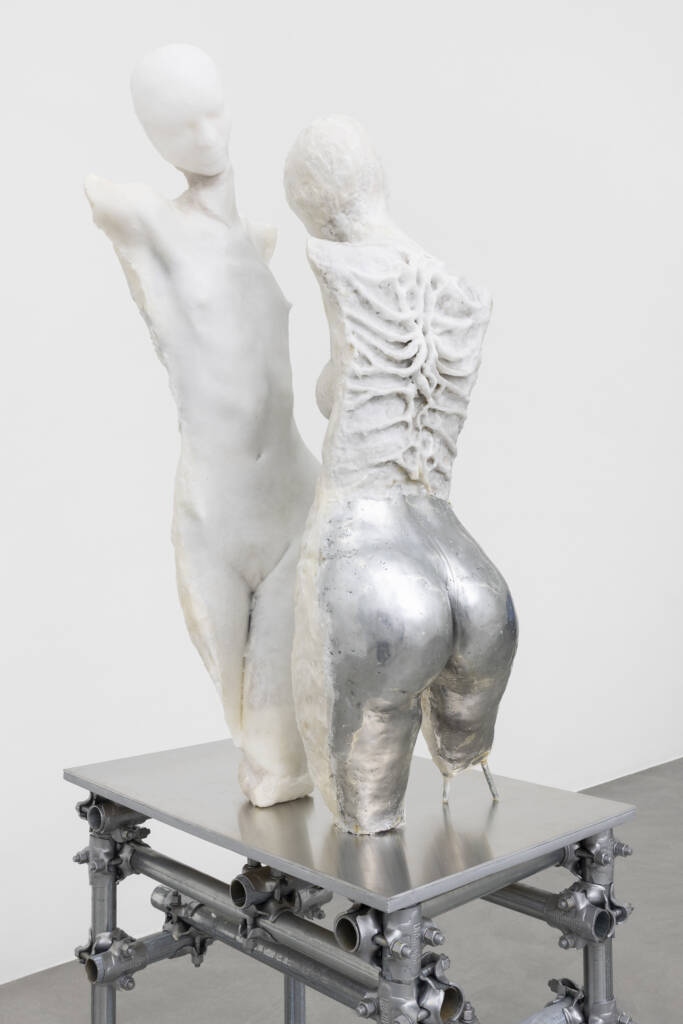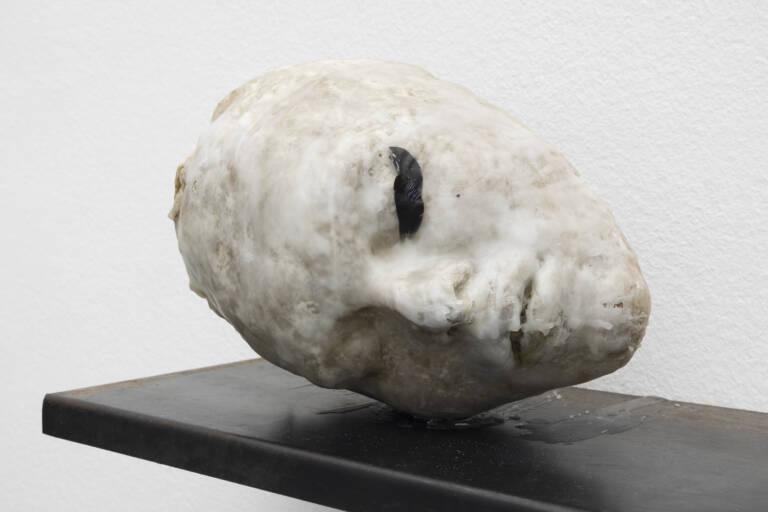
Supernature, 2025. Installation view at Francesca Minini, Milan
Photography by ANDREA ROSSETTI, courtesy of AMBRA CASTAGNETTI and FRANCESCA MININI, Milan

Supernature, 2025. Installation view at Francesca Minini, Milan
Photography by ANDREA ROSSETTI, courtesy of AMBRA CASTAGNETTI and FRANCESCA MININI, Milan
Ambra Castagnetti’s artistic practice delves deeply into the body’s fluidity, transformation, and species merging, transcending traditional boundaries between human and non-human identities. From sculpture and video to ceramics and performance, Castagnetti embraces a variety of mediums to explore the existential questions that shape our world. Her work has been showcased in various exhibitions and residencies worldwide, including the Venice Biennale (2022), Palazzo Monti in Brescia, and Manifattura Tabacchi in Florence. In this interview, Ambra Castagnetti shares her insights into the creative process, how spirituality influences her work, and her thoughts on the transformative potential of art in an ever-changing world.
hube: Your work explores the body as an unstable, malleable structure. What first drew you to this theme, and how has your perspective on it evolved over time?
Ambra Castagnetti: My interest in the body as a mutable entity comes from a deep fascination with transformation, both physical and existential. I have always perceived the body as something that transcends rigid definitions, an ecosystem in constant flux shaped by internal and external forces. Over time, my approach has evolved to incorporate ideas from posthumanism and interspecies relationships, exploring how bodies—human, animal, and hybrid—can merge, mutate, and redefine themselves within new contexts.
h: You move fluidly between sculpture, video, installation, performance, and now painting. How does your creative process change depending on the medium?
AC: Each medium allows me to explore different aspects of the same core questions. Sculpture gives material weight to my ideas, and video and performance allow me to engage with movement and temporality while installation creates immersive environments. Painting is a more recent addition, but it feels like an extension of my sculptural practice, a way to imprint gestures and emotions onto a surface. My process is intuitive, and the choice of medium often emerges organically based on the concept I’m working on.
h: Your work references ancient beliefs in the fluidity of identity across species. How do you incorporate these ideas into your creative process?
AC: I draw inspiration from mythologies, folklore, and contemporary biological research that challenge the human/non-human divide. My sculptures and performances often depict hybrid beings, creatures that exist in liminal spaces between species, gender, and identity. I am interested in the rituals and symbolic gestures that reinforce these connections, translating them into visual and performative language.
h: Can you share more about your approach to ceramics? How does this medium, with its physicality and transformation through fire, align with your artistic vision?
AC: Ceramics is a fascinating medium because it embodies transformation—it moves from a malleable, almost flesh-like state to something rigid and enduring through fire. This process mirrors the themes I explore in my work: metamorphosis, resilience, and the alchemy of change. Working with clay also has an elemental, almost ritualistic quality that deeply resonates with my practice.

